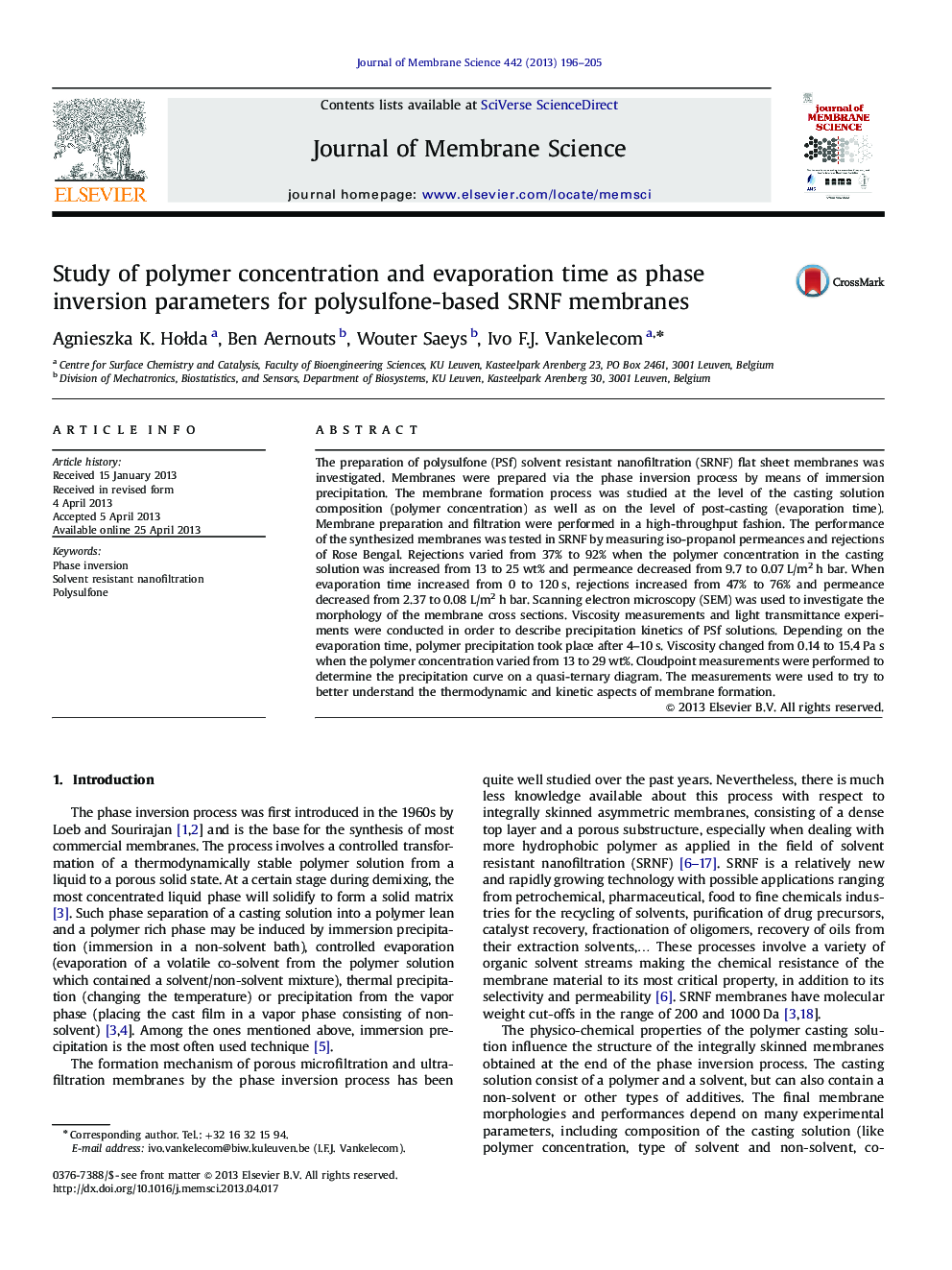| Article ID | Journal | Published Year | Pages | File Type |
|---|---|---|---|---|
| 634167 | Journal of Membrane Science | 2013 | 10 Pages |
Abstract
The preparation of polysulfone (PSf) solvent resistant nanofiltration (SRNF) flat sheet membranes was investigated. Membranes were prepared via the phase inversion process by means of immersion precipitation. The membrane formation process was studied at the level of the casting solution composition (polymer concentration) as well as on the level of post-casting (evaporation time). Membrane preparation and filtration were performed in a high-throughput fashion. The performance of the synthesized membranes was tested in SRNF by measuring iso-propanol permeances and rejections of Rose Bengal. Rejections varied from 37% to 92% when the polymer concentration in the casting solution was increased from 13 to 25 wt% and permeance decreased from 9.7 to 0.07 L/m2 h bar. When evaporation time increased from 0 to 120 s, rejections increased from 47% to 76% and permeance decreased from 2.37 to 0.08 L/m2 h bar. Scanning electron microscopy (SEM) was used to investigate the morphology of the membrane cross sections. Viscosity measurements and light transmittance experiments were conducted in order to describe precipitation kinetics of PSf solutions. Depending on the evaporation time, polymer precipitation took place after 4-10 s. Viscosity changed from 0.14 to 15.4 Pa s when the polymer concentration varied from 13 to 29 wt%. Cloudpoint measurements were performed to determine the precipitation curve on a quasi-ternary diagram. The measurements were used to try to better understand the thermodynamic and kinetic aspects of membrane formation.
Related Topics
Physical Sciences and Engineering
Chemical Engineering
Filtration and Separation
Authors
Agnieszka K. HoÅda, Ben Aernouts, Wouter Saeys, Ivo F.J. Vankelecom,
